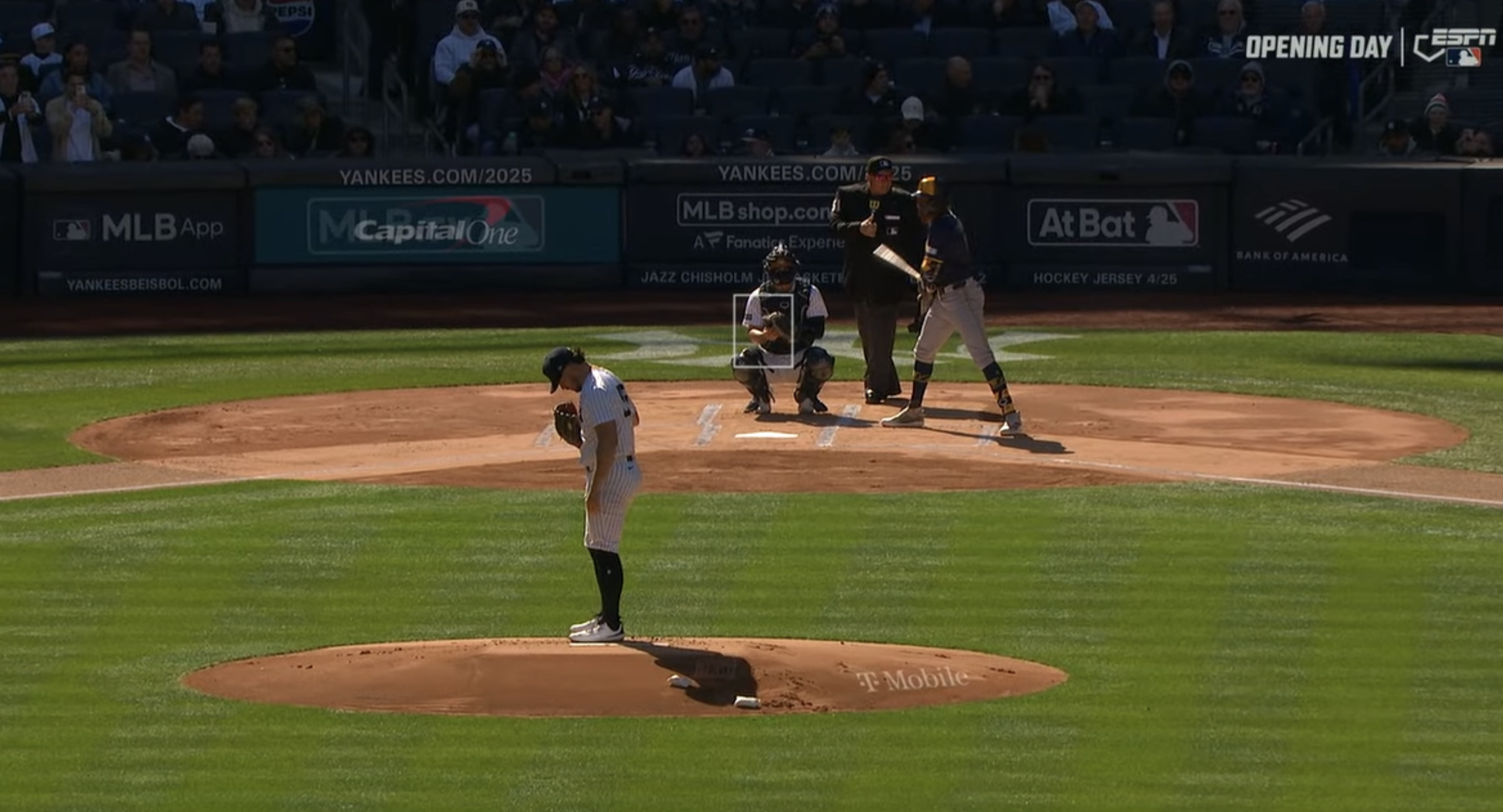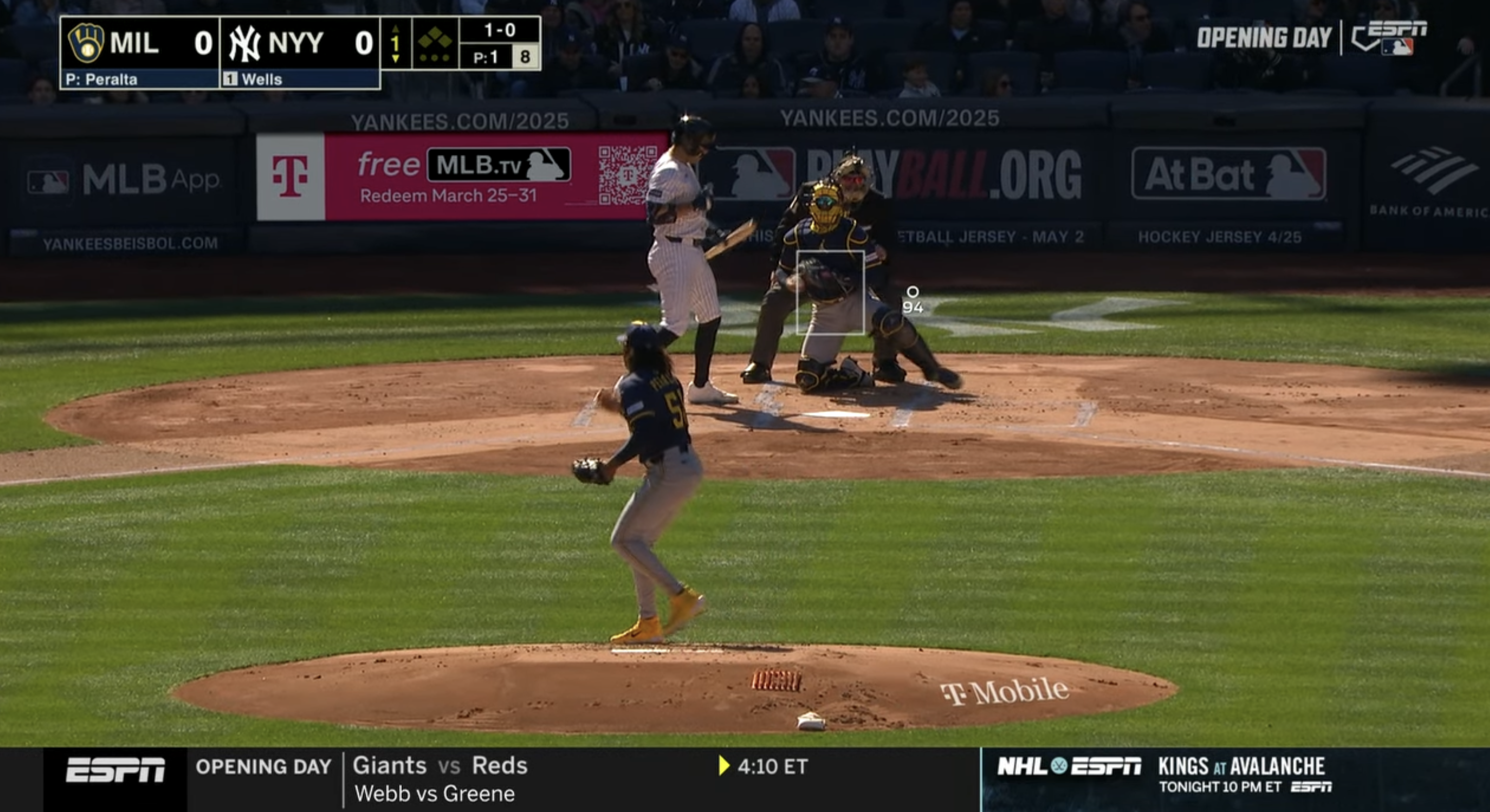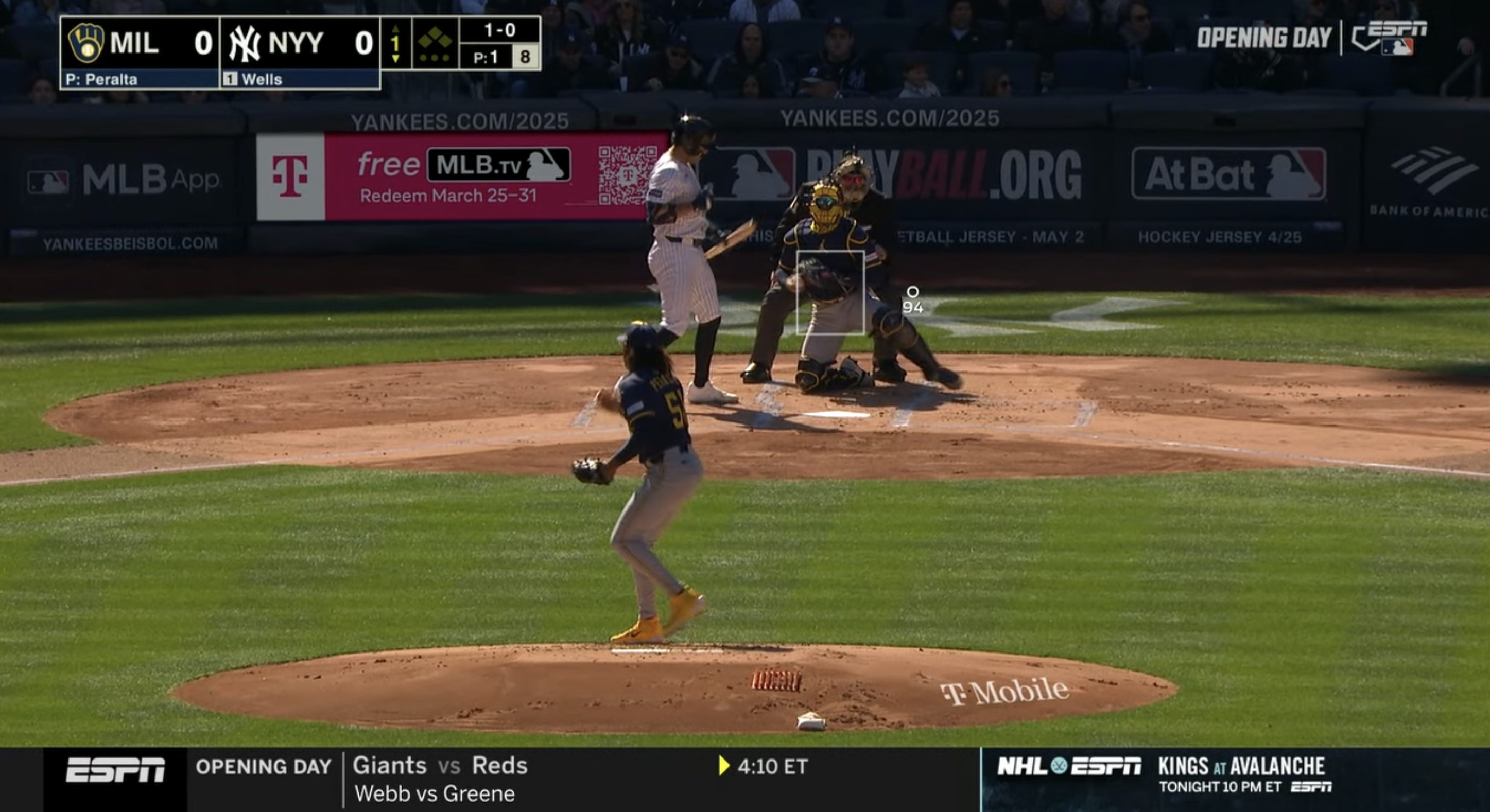Early one morning last week, shortly after midnight, when I’m often awake later than I should be,Transcoded.net was down. The longest it’s ever been down since I monitoring my uptime & downtime as I’ve begun to use my home server (a 2016 Dell Precision that was courtesy of WBSU) as the host for my portfolio. Why was it down? Because I forgot when I swapped to ethernet to wifi, to change the IP of the port I was forwarding. Essentially, I forgot to change 2 numbers.
We all make mistakes, though. During ESPN’s MLB Opening Day broadcast, a branded graphic that was digitally overlaid onto the ad space behind the batter seemed to have something go awry with its alpha channel and the switcher’s interpretation of it. Possibly due to their more cinematic camera setup rather than the traditional (see figures below) showing more shadows. Ultimately, it looked like the alpha channel gain was too low. When it returns, it is uncomfortable to look at, with seemingly improper feathering of the borders, a simple alpha channel value of 1, and oversaturation for the shadows. It’s uncomfortable to folks at home that something has gone wrong. It’s a tangible real-world lesson to why I always advise people new to creating graphics to double check their alpha channels, and to test it in the expected environment. That never, and genuinely never, means no mistakes, though. Likely (hopefully) they had already tested these things, however one never truly excludes all the ways things can go wrong. Just as many as you can avoid without compromising quality.



Now, why did I take over an hour to change 2 numbers? Because it was the first thing I should’ve checked. Which, when you’ve gotten too comfortable, is often the last thing you check. It’s why phishing scams and social engineering continue to catch people who are experts on them. I became too comfortable with messing with the server, too used to solving niche problems I have to research. Similar to how I passed Calculus III, yet my 5th grade brother’s math homework confuses me frequently. This was a great wake-up call to continue to challenge myself and refuse to get too comfortable.
Bringing this back to broadcast–signal flow troubleshooting exists for a reason. Checking each part where it can fail, systematically, is essentially the key to troubleshooting issues with systems where the issue isn’t self-explanatory. In this case, I should’ve started by checking my local ip address of my server, and the one I had forwarded by my router. It would immediately reveal to the issue. Instead, I was not methodical about it, and wasted an hour.
Well, I suppose not wasted completely. I did learn a big lesson: never forget about signal flow. As well as the basics, when you’re way deep in. Plus, I always say that we must be thankful for our failures, for they lead us on our path to success. W. E. Disney says it better though:
“You may not realize it when it happens, but a kick in the teeth may be the best thing in the world for you.”
W. E. Disney


Leave a Reply